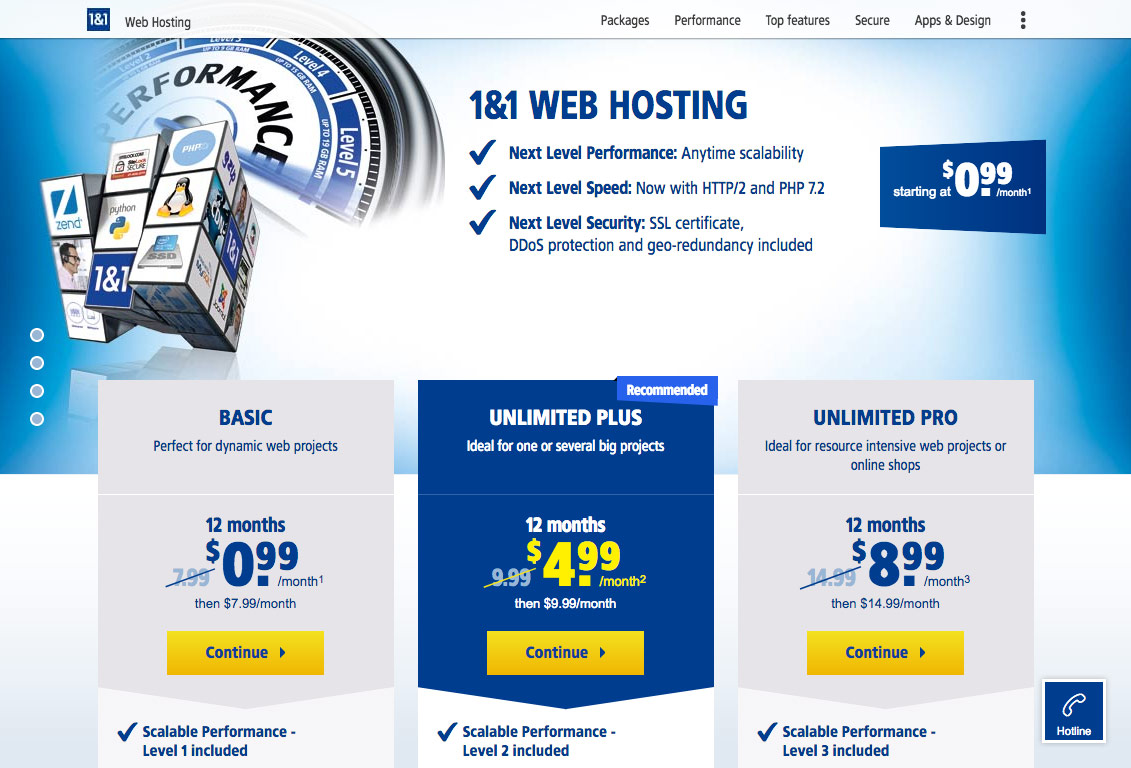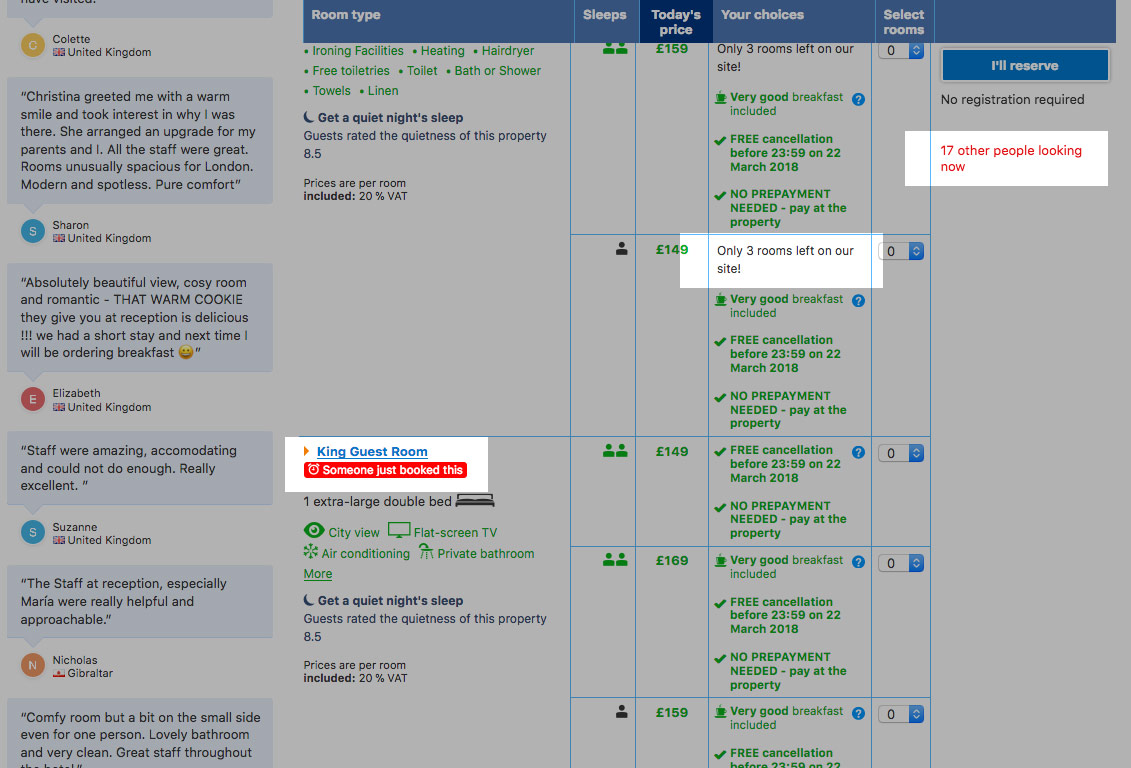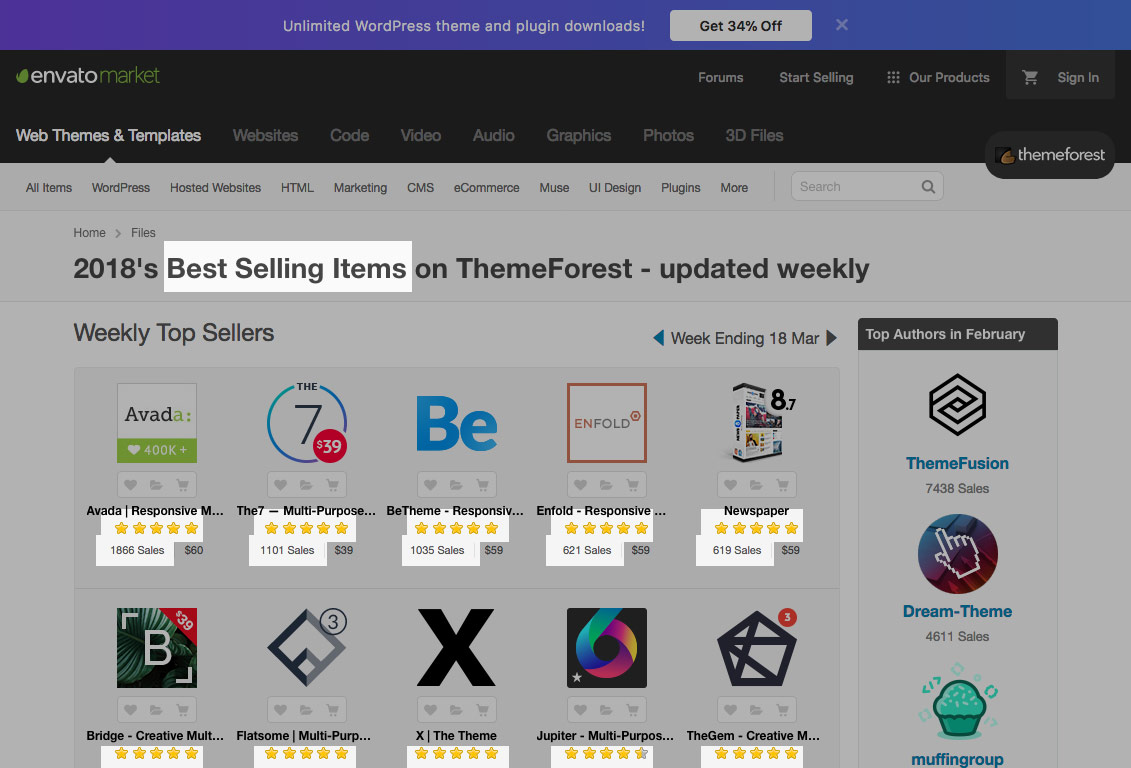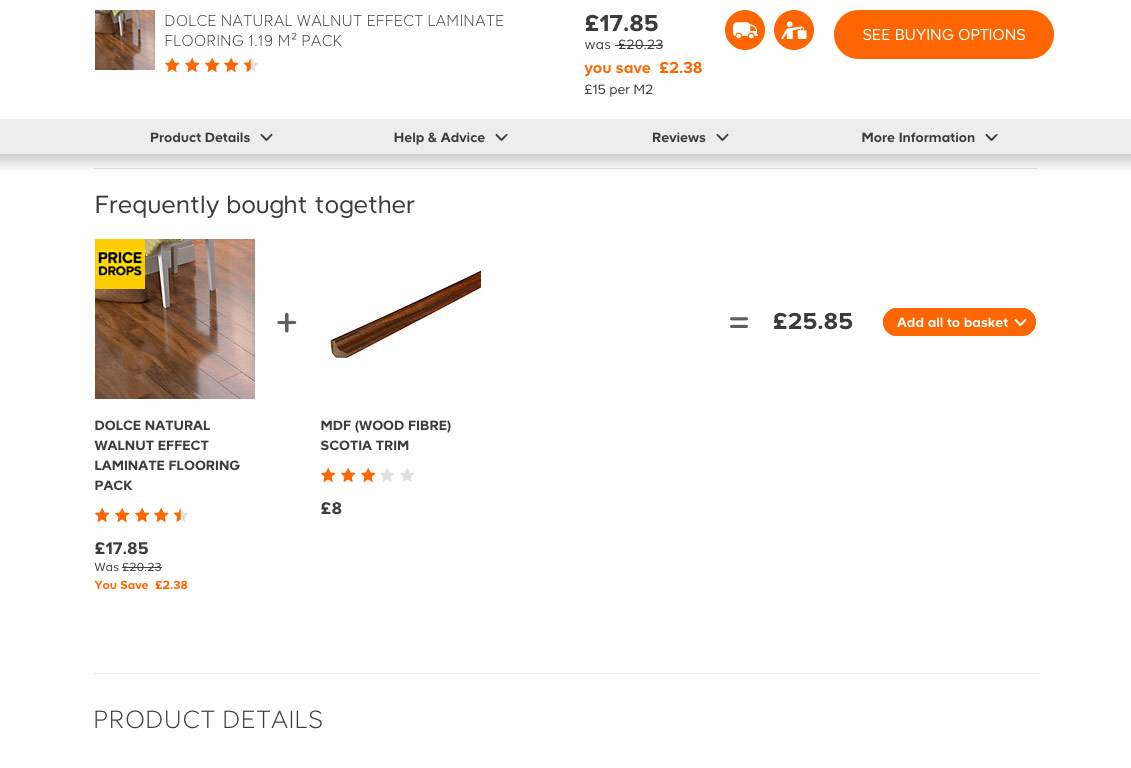Psychological triggers
We've looked at making sure the content of your page is arranged in a way to attract your visitor's eye to the most important element, but there are other ways you can persuade them to take the action you want. These are known as psychological and emotional triggers.

Persuasion methods
There are seven main methods of persuasion:
- Reciprocation
- Commitment
- Social Proof
- Authority
- Scarcity
- Framing
- Salience
Let's look at them one by one.
Reciprocation
This principle relies on the user feeling like they have been done a favour, and so will want to return it.
For example, if somebody gives you a gift, you feel obliged to do the same at some future date.
In a website, this can be done by giving the user a small gift, such as a sample chapter from a book, a regular newsletter or just useful information, in the knowledge that users will feel a commitment to offer something in return.
The ‘something in return' that the site asks for could be anything from making a purchase, a referral, or a comment.
Sites that employ this technique are not shy of asking for the return of the favour that the user ‘owes' them. By the way, if you are enjoying this badge, please share it on Twitter!


Commitment
This method of persuasion relies on the user's self image. People like to believe that our behaviour is consistent with our beliefs. Once you take a stand on something that is visible to other people, you suddenly feel a drive to maintain and defend that point of view to appear reliable and constant.
An example of this in action, is if an organisation asks you to like a product on Facebook so you can watch a video or access particular content. Even if you have only done this to access the content, you have still made a public commitment to this product and will feel more inclined to support and defend this product in the future.
Social Proof
This principle plays on the 'follow the herd' mentality. People like to observe other people's behaviour to judge what's normal, and then copy it.
Websites use this mentality by showing what other users are doing on their site in the hope that that this will influence the user to copy.
An example of this in action is Amazon's ‘What do customers buy after viewing this product?' list. If people don't usually buy the product the user is on, the user may be influenced to change their mind.
Authority
The theory behind this method is that an individual is more likely to take action if the message comes from a credible and authoritative source.
Examples of this principle in relation to websites is the use of positive testimonials on a company page, or an e-commerce site showing the security certificates they hold.
Scarcity
This principle is based on the notion that people are more likely to want something if they think it is available only for a limited time or if it is in short supply.
This works on two levels, playing on both the fear of missing out, and making products appear more valuable. Psychologists have conducted experiments that have shown that if you give people a chocolate biscuit from a jar, they rate the biscuit as more enjoyable if it comes from a jar with just two biscuits than from a jar with ten.
An example of this on a website, is the urgency message on hotel rooms or flights. The message that there are only four left at this price increase the impulse to buy.


Framing
The Framing principle works on the assumption that people are unlikely to be able to estimate the absolute value of what they are buying.
By giving a comparison price it helps to ‘frame' the price you are offering.
An example of this, is when sites use what is known as the ‘Goldilocks Effect' to influence the user to buy the option that the site wants.
The ‘Goldilocks Effect' offers three options - one that is a cheap, barely functional base level of a product, one an overpriced, gold-plated version of the product and one that sits in between, so feeling ‘just right'.
Salience
This method tells us that people are more likely to pay attention to elements in your user interface that are novel (a brightly coloured button) and that are relevant to where they are in their task.
For example, there are specific times during a purchase when shoppers are more likely to investigate a promotion or a special offer. Another example of this is when you’ve added a television to your basket on an eCommerce website, this is the perfect time to promote the extended warranty or installation.

Based on what you’ve just learnt, identify the persuasion methods used by these websites.











